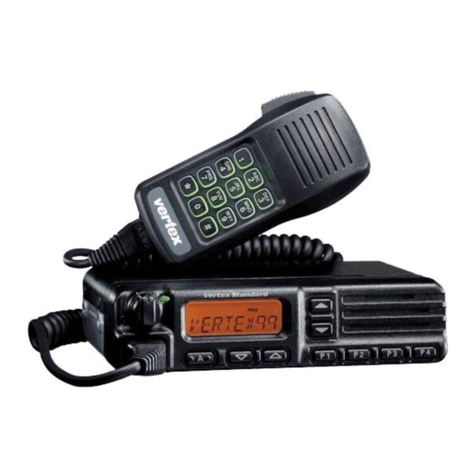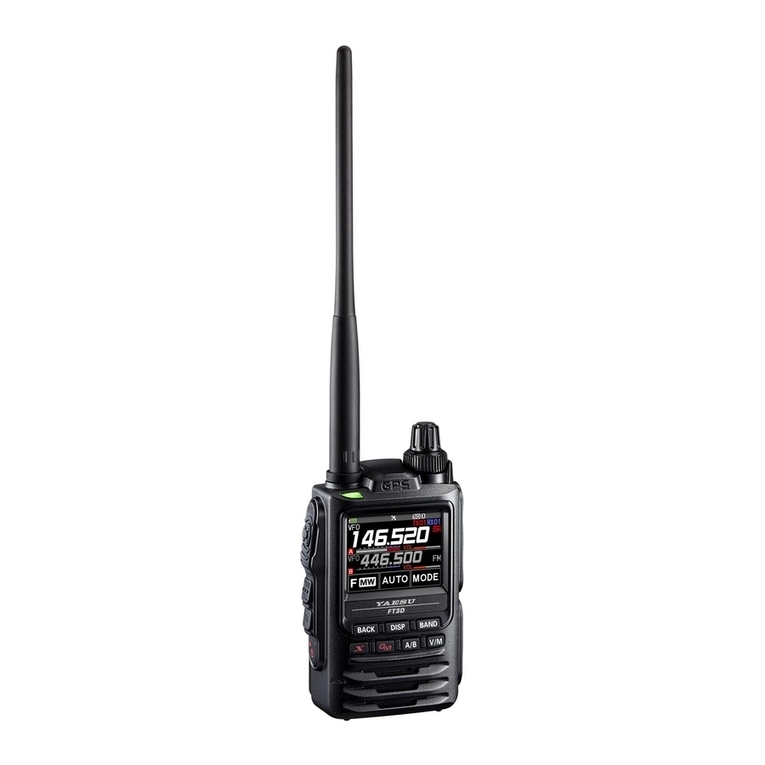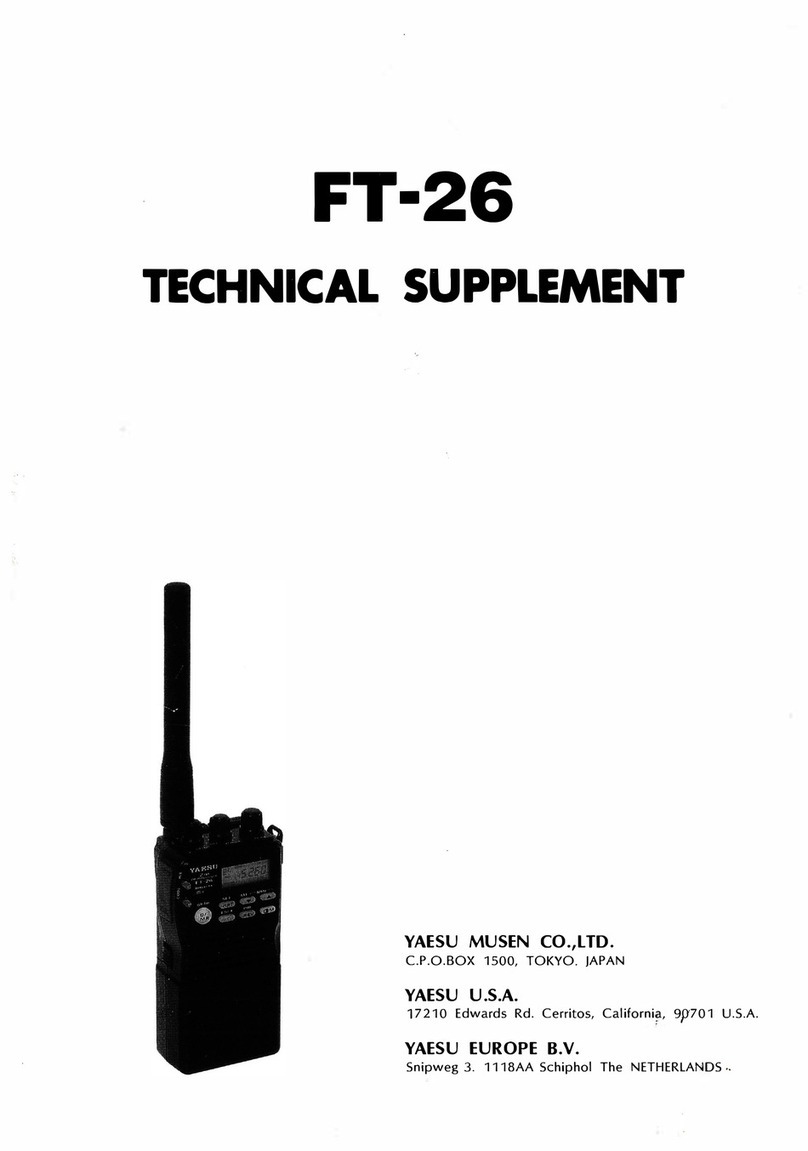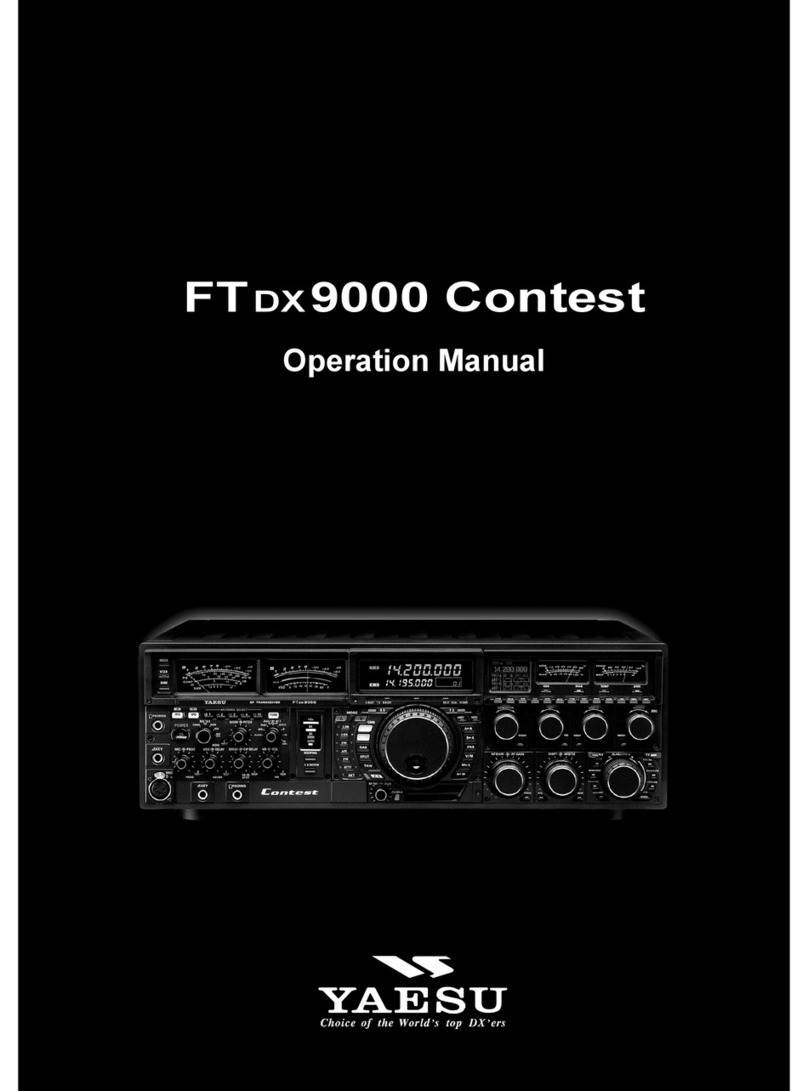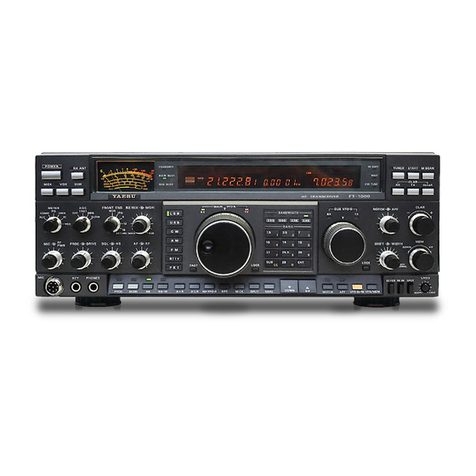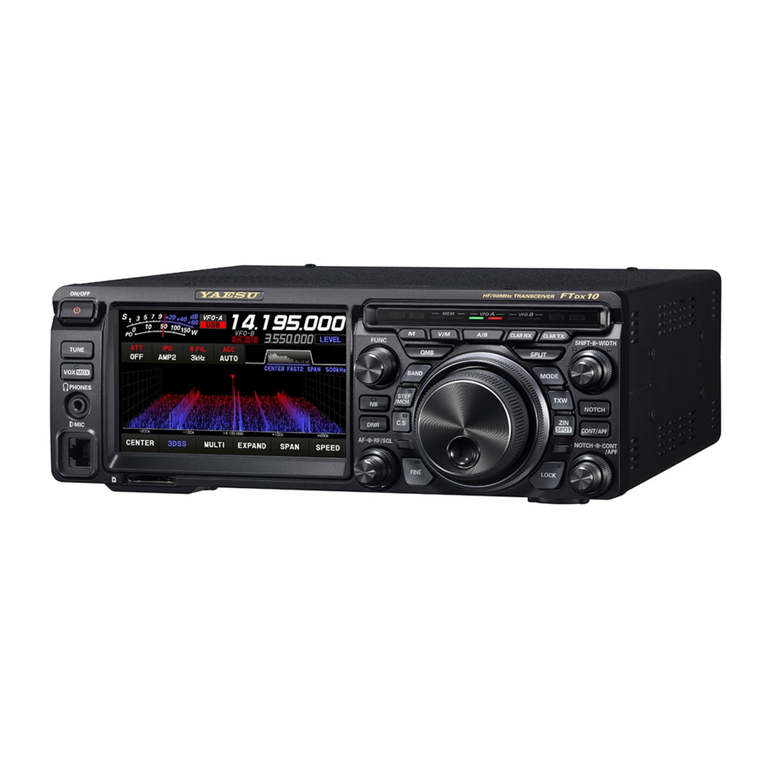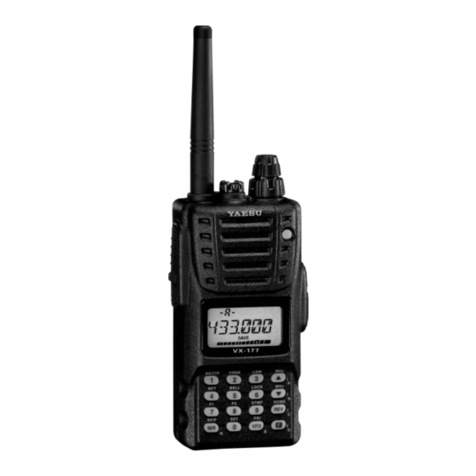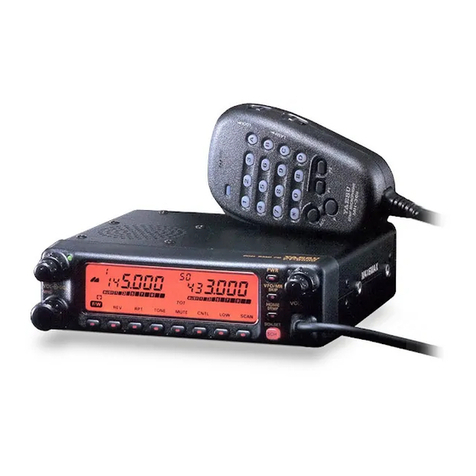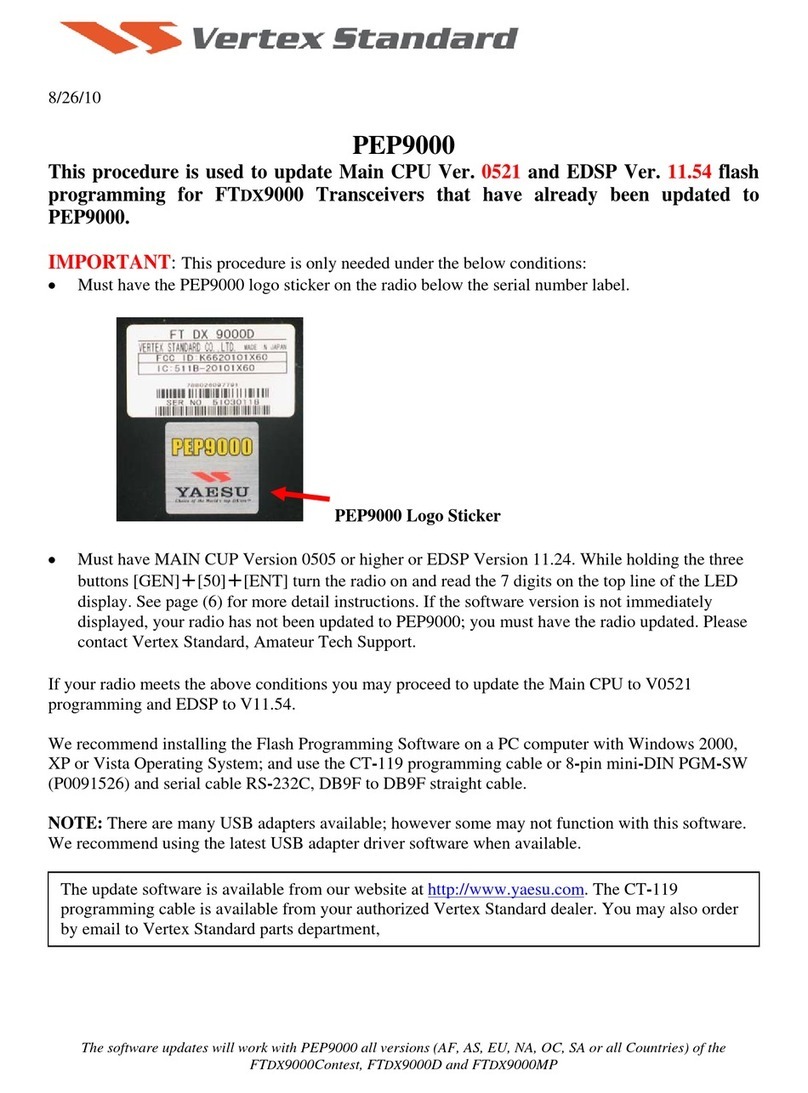
FT1DR/DE Technical Supplement
Alignment
ALIGNMENT-1
Introduction and Precautions
The FT1DR/FT1DE has been carefully aligned at
the factory for performance across the specified
amateur bands. Realignment should therefore
not be necessary except in the event of a compo-
nent failure. All component replacement and ser-
vice should be performed only by an authorized
YAESU representative, or the warranty policy may
be voided.
The following procedures cover the sometimes crit-
ical and tedious adjustments that are not normally
required once the transceiver has left the factory.
However, if damage occurs and some parts are re-
placed, realignment may be required. If a sudden
problem occurs during normal operation, it is like-
ly due to component failure; realignment should
not be done until after the faulty component has
been replaced.
We recommend that servicing be performed only
by authorized YAESU service technicians, who are
experienced with the circuitry and fully equipped
for repair and alignment. Therefore, if a fault is
suspected, contact the dealer from whom the trans-
ceiver was purchased for instructions regarding re-
pair. Authorized YAESU service technicians realign
all circuits and make complete performance checks
to ensure compliance with factory specifications
after replacing any faulty components.
Those who do undertake any of the following
alignments are cautioned to proceed at their own
risk. Problems caused by unauthorized aempts at
realignment are not covered by the warranty pol-
icy. Also, YAESU must reserve the right to change
circuits and alignment procedures in the interest of
improved performance, without notifying owners.
Under no circumstances should any alignment be
attempted unless the normal function and opera-
tion of the transceiver are clearly understood, the
cause of the malfunction has been clearly pinpoint-
ed and any faulty components replaced, and the
need for realignment determined to be absolutely
necessary.
Required Test Equipment
RF Signal Generator with calibrated output level
at 500 MHz
Deviation Meter (linear detector)
In-line Wameter with 5% accuracy at 500 MHz
50-ohm, 10-W RF Dummy Load
8-ohm AF Dummy Load
Regulated DC Power Supply adjustable from
8 to 16 V DC, 3 A
Frequency Counter: 0.2-ppm accuracy at
500 MHz
AF Signal Generator
AC Voltmeter
DC Voltmeter: high impedance
UHF Sampling Coupler
SINAD Meter
Alignment Preparation & Precautions
A 10-W RF dummy load and in-line wattmeter
must be connected to the main antenna jack in all
procedures that call for transmission; alignment
is not possible with an antenna. After complet-
ing one step, read the next step to see if the same
test equipment is required. If not, remove the test
equipment (except dummy load and wattmeter,
if connected) before proceeding. Correct align-
ment requires the transceiver and test equipment
be maintained at a constant ambient temperature
between 68~86 °F (20~30 °C). When the transceiv-
er is brought into the shop from hot or cold air,
it should be allowed some time to come to room
temperature before alignment. Whenever possible,
alignments should be made with oscillator shields
and circuit boards rmly axed in place. Also, the
test equipment must be thoroughly warmed up be-
fore beginning.
Note: Signal levels in dB referred to in the alignment
procedure are based on 0 dBμ=0.5 μV (closed circuit).
Important Notice
Do not adjust the alignment menus that are
not mentioned in this manual.

